Rooftop Bok Choy Gardening: Imagine stepping onto your rooftop and harvesting fresh, crisp Bok Choy, ready to add a vibrant touch to your next stir-fry. Sounds dreamy, right? Well, it doesn’t have to be just a dream! This DIY guide is your passport to transforming your underutilized rooftop into a thriving edible garden, even if you’ve never grown anything before.
For centuries, urban dwellers have sought ways to connect with nature and supplement their diets. From the hanging gardens of Babylon to the community gardens that sprung up during wartime, the desire to cultivate our own food is deeply ingrained in our history. In many Asian cultures, Bok Choy is not just a vegetable; it’s a symbol of good fortune and prosperity, often featured in celebratory meals. Now, you can bring that good fortune (and delicious flavor!) right to your own home.
Why should you embark on this rooftop Bok Choy adventure? Because fresh, homegrown produce tastes infinitely better than anything you can buy at the store. Plus, you’ll know exactly what’s gone into growing it – no pesticides, no mystery ingredients, just pure, healthy goodness. And let’s be honest, there’s something incredibly satisfying about nurturing a plant from seed to harvest. This DIY guide will provide you with the essential tips and tricks to successfully start your own rooftop Bok Choy gardening project, regardless of your experience level. I’m excited to share these simple, effective methods with you, so let’s get started!
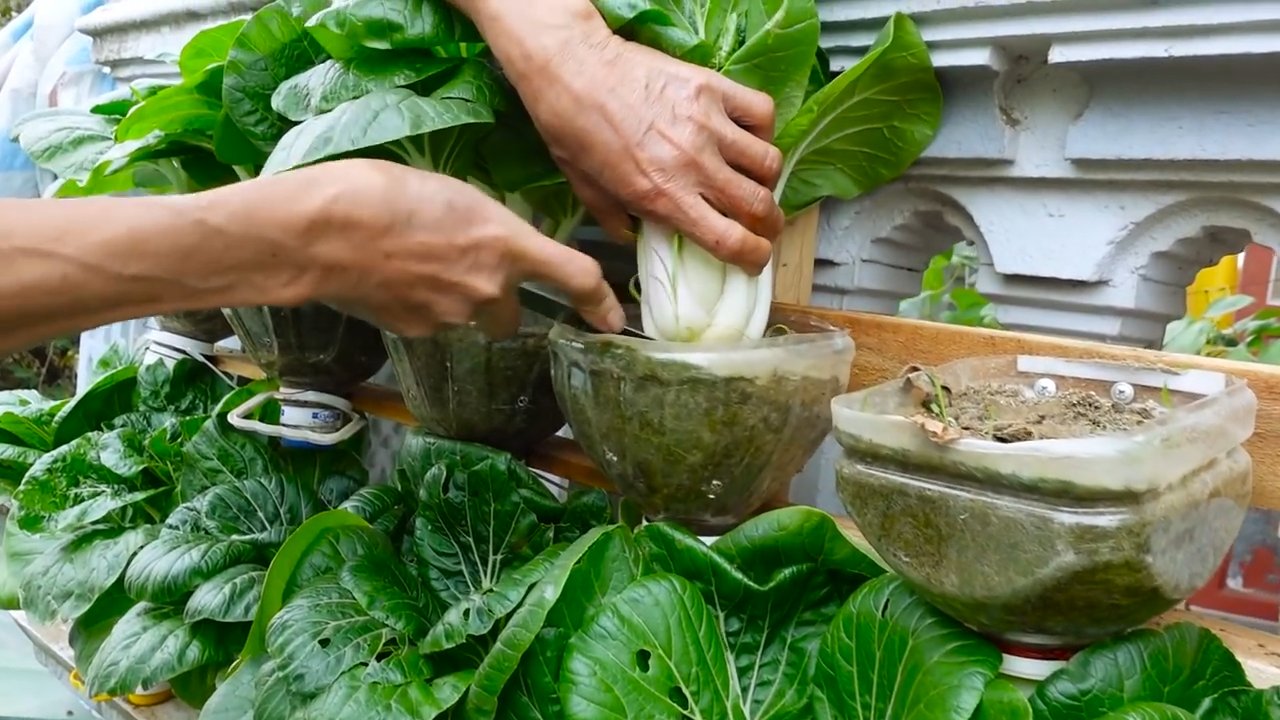
Your Own Bok Choy Rooftop Garden: A Step-by-Step Guide
Hello garden friends! Do you also have limited garden space but still crave fresh vegetables? Then I have just the thing for you: a bok choy garden on the roof! Yes, you heard that right. With a few simple steps and a little love, you can create your own little paradise on the roof and enjoy fresh, crisp bok choy. I’ll show you how!
What You Need for Your Rooftop Garden
Before we get started, here is a list of all the materials and tools you will need for your bok choy rooftop garden adventure:
- Suitable planters: Choose lightweight but sturdy containers. Pots, planters, or even recycled containers (with drainage holes!) are great. Make sure they are large enough for the bok choy to have enough space to grow.
- High-quality potting soil: Use a well-draining, nutrient-rich soil. Special vegetable soil is ideal.
- Bok choy seeds or seedlings: You can either start with seeds or get pre-grown seedlings. Both work great!
- Drainage material: Gravel, expanded clay, or broken pottery shards help to prevent waterlogging.
- Watering can or garden hose: For regularly watering your plants.
- Fertilizer: An organic vegetable fertilizer will provide your plants with the necessary nutrients.
- Garden shears or knife: For harvesting the bok choy.
- Gloves: To keep your hands clean.
- Optional: Slug protection: Unfortunately, bok choy is very popular with slugs.
Safety Precautions for Your Rooftop Garden
Before we start planting, it’s important to take some safety precautions:
- Check the structural integrity: Make sure your roof can support the weight of the planters and the soil. When in doubt, you should consult a structural engineer.
- Check the waterproofing: Make sure the roof waterproofing is intact to avoid water damage.
- Safety distance: Maintain a safe distance from the edge of the roof to prevent accidents.
- Wind protection: If your roof is very windy, you should install a windbreak to protect your plants.
Step-by-Step Guide: How to Create Your Bok Choy Rooftop Garden
Now let’s get down to it! Here is a detailed guide on how to create your own bok choy garden on the roof:
1. Preparing the Planters:
- Clean the planters thoroughly with soap and water.
- Place a layer of drainage material (gravel, expanded clay, or broken pottery) at the bottom of the containers. This ensures good drainage and prevents waterlogging.
- Fill the containers with high-quality potting soil. Leave about 5 cm (2 inches) of space to the rim.
2. Sowing the Seeds or Planting the Seedlings:
- Sowing: If you are starting with seeds, read the instructions on the seed packet. Usually, the seeds are sown about 1 cm (0.4 inches) deep in the soil. Maintain a distance of about 15-20 cm (6-8 inches) between the seeds. Water the soil gently.
- Planting: If you are using seedlings, dig small holes in the soil large enough to accommodate the root balls. Carefully place the plants in the holes and fill them with soil. Press the soil down lightly and water the plants well. Also, maintain a distance of 15-20 cm (6-8 inches) between the plants here.
3. Location and Care:
- Bok choy loves the sun but can also tolerate partial shade. Choose a location on your roof that gets at least 4-6 hours of sun per day.
- Water your bok choy plants regularly, especially on hot days. The soil should always be slightly moist, but not wet. Avoid waterlogging!
- Fertilize your plants every 2-3 weeks with an organic vegetable fertilizer. Follow the instructions on the fertilizer package.
- Remove weeds regularly to protect your plants from competition.
- Regularly check your plants for pests and diseases. If necessary, you can use organic pesticides.
Protection from Pests and Diseases
Unfortunately, bok choy is not immune to pests and diseases. Here are some tips on how to protect your plants:
- Slugs: Bok choy is a feast for slugs. You can scatter slug pellets, set up slug fences, or simply pick them off.
- Flea beetles: Flea beetles are small insects that eat holes in the leaves. You can cover them with a fine net or combat them with neem oil.
- Cabbage whites: Cabbage whites lay their eggs on the leaves of the bok choy. The caterpillars then eat the leaves. You can pick off the caterpillars or combat them with Bacillus thuringiensis.
- Downy mildew: Downy mildew is a fungal disease that manifests as yellowish spots on the leaves. You can combat it with a fungicide.
Harvest Time!
After about 4-6 weeks, you can harvest your first bok choy!
- Cut the outer leaves when they are about 15-20 cm (6-8 inches) long.
- Leave the heart of the plant so it can continue to grow.
- You can also harvest the entire bok choy by cutting it just above the ground.
Additional Tips for Your Bok Choy Rooftop Garden
- Variety selection: There are different varieties of bok choy. Choose a variety that is suitable for your climate.
- Crop rotation: Do not plant bok choy in the same spot every year to prevent diseases.
- Mulching: Mulch the soil around your plants with straw or grass clippings to retain moisture and suppress weeds.
- Vertical gardens: If you have limited space, you can also create vertical gardens. Use hanging baskets, pallets, or special planting bags for this.
- Irrigation system: If you don’t have time to water regularly, you can install an automatic irrigation system.
Common Mistakes and How to Avoid Them
Mistakes can also happen when growing bok choy on the roof. Here are some common mistakes and how to avoid them:
- Wrong soil: Do not use normal garden soil, but special potting soil for vegetables.
- Too little water: Water your plants regularly, especially on hot days.
- Too much water: Avoid waterlogging, as this can lead to root rot.
- Too little fertilizer: Fertilize your plants regularly to provide them with the necessary nutrients.
- Pests and diseases: Regularly check your plants for pests and diseases and combat them if necessary.
Bok Choy in the Kitchen: Delicious Recipe Ideas
Now that you have harvested your own bok choy, the question is: What do I do with it? Here are a few delicious recipe ideas:
Bok Choy Salad: Cut the bok choy into thin strips and mix it with carrots, cucumbers, and a delicious dressing.
Bok Choy Stir-fry: Cut the bok choy into strips and stir-fry it with garlic, ginger, and soy sauce.
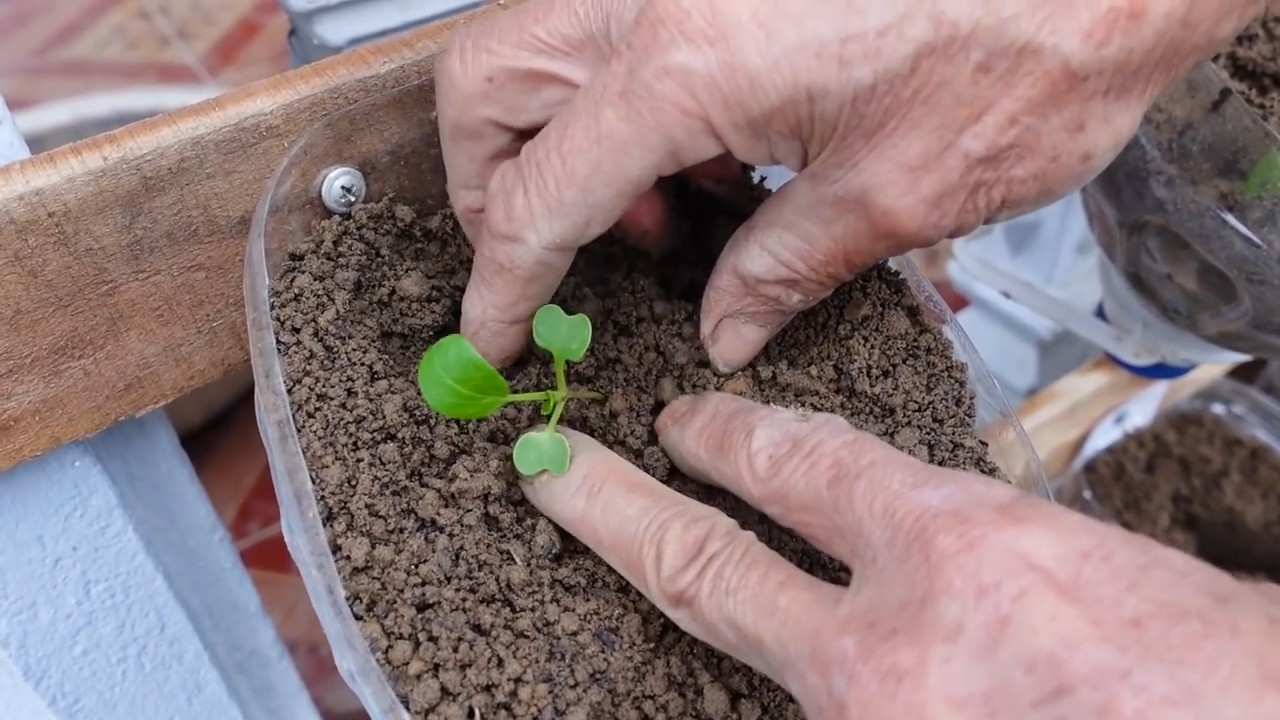
Conclusion
So, there you have it! Transforming your rooftop into a thriving bok choy garden is not only achievable, but incredibly rewarding. We’ve walked you through the essentials, from selecting the right containers and soil to understanding the specific needs of this versatile leafy green. But why is this DIY trick a must-try?
Firstly, growing your own bok choy guarantees freshness and quality that you simply can’t replicate with store-bought produce. Imagine stepping onto your rooftop, harvesting crisp, vibrant leaves just moments before adding them to your stir-fry or soup. The flavor difference is undeniable.
Secondly, rooftop gardening is an excellent way to maximize space, especially if you live in an urban environment with limited yard space. It allows you to connect with nature, enjoy the therapeutic benefits of gardening, and contribute to a more sustainable lifestyle, all within the confines of your own home.
Thirdly, and perhaps most importantly, cultivating your own bok choy empowers you to control the growing process. You can choose organic methods, avoid harmful pesticides, and ensure that your vegetables are free from unwanted chemicals. This is particularly important for those who are health-conscious and prioritize clean eating.
But the possibilities don’t end there! Feel free to experiment with different varieties of bok choy. Baby bok choy is perfect for quick salads, while mature varieties are ideal for braising or grilling. You can also try companion planting, incorporating herbs like cilantro or dill to deter pests and enhance the flavor of your bok choy. Consider adding colorful flowers like marigolds to attract beneficial insects and add a touch of beauty to your rooftop oasis.
Another exciting variation is to explore different growing mediums. While we recommended a well-draining potting mix, you could also experiment with hydroponics or aquaponics for a more advanced and efficient growing system. These methods can significantly reduce water consumption and accelerate growth rates.
Don’t be afraid to get creative with your container choices as well. Repurpose old buckets, crates, or even tires to create unique and sustainable planters. Just make sure that your containers have adequate drainage holes to prevent waterlogging.
Ultimately, the success of your rooftop bok choy garden depends on your dedication and willingness to learn. Pay close attention to the needs of your plants, monitor them regularly for pests and diseases, and adjust your watering and fertilizing schedule as needed.
We are confident that with a little effort and patience, you can create a flourishing rooftop garden that provides you with a constant supply of fresh, delicious bok choy. So, what are you waiting for? Grab your gardening gloves, gather your supplies, and embark on this exciting journey today!
We encourage you to try this DIY rooftop bok choy gardening trick and share your experiences with us. Post photos of your garden, share your tips and tricks, and let us know what worked best for you. Together, we can create a community of rooftop gardeners who are passionate about growing their own food and living a more sustainable lifestyle. Happy gardening!
Frequently Asked Questions (FAQ)
What kind of bok choy is best for rooftop gardening?
The best type of bok choy for rooftop gardening depends on your personal preferences and the space you have available. Baby bok choy varieties, like ‘Shanghai Green’ or ‘Mei Qing Choi,’ are excellent choices for smaller containers and offer a quicker harvest. They mature in about 30-40 days. For larger containers, you can grow full-sized bok choy varieties like ‘Joi Choi’ or ‘Win-Win Choi,’ which take around 45-60 days to mature. Consider the size of your containers and the amount of sunlight your rooftop receives when making your selection. Experimenting with different varieties is also a great way to discover your favorites.
How much sunlight does bok choy need on a rooftop?
Bok choy thrives in full sun, requiring at least 6 hours of direct sunlight per day. However, it can also tolerate partial shade, especially during the hottest part of the afternoon. If your rooftop receives less than 6 hours of direct sunlight, consider using grow lights to supplement the natural light. Monitor your plants closely and adjust their position as needed to ensure they are receiving adequate sunlight. If the leaves appear pale or leggy, it could be a sign that they are not getting enough light.
What is the best soil for growing bok choy in containers?
The best soil for growing bok choy in containers is a well-draining potting mix that is rich in organic matter. Avoid using garden soil, as it can be too heavy and compact, hindering drainage and root growth. Look for a potting mix that contains ingredients like peat moss, perlite, and vermiculite. You can also amend your potting mix with compost or aged manure to provide additional nutrients. Ensure the pH of the soil is slightly acidic to neutral, around 6.0 to 7.0.
How often should I water my rooftop bok choy?
Water your rooftop bok choy regularly, keeping the soil consistently moist but not waterlogged. The frequency of watering will depend on factors such as the weather, the size of your containers, and the type of potting mix you are using. Check the soil moisture level daily by sticking your finger into the soil. If the top inch feels dry, it’s time to water. Water deeply, allowing the water to drain out of the bottom of the container. Avoid overhead watering, as this can increase the risk of fungal diseases.
What are common pests and diseases that affect rooftop bok choy, and how can I prevent them?
Common pests that affect rooftop bok choy include aphids, cabbage worms, and flea beetles. To prevent pest infestations, inspect your plants regularly and remove any pests you find by hand. You can also use insecticidal soap or neem oil to control pests. Row covers can also be used to protect your plants from pests. Common diseases that affect bok choy include downy mildew and clubroot. To prevent diseases, ensure good air circulation around your plants, avoid overhead watering, and use disease-resistant varieties. If you notice any signs of disease, remove the affected leaves immediately.
How do I fertilize my rooftop bok choy?
Fertilize your rooftop bok choy every 2-3 weeks with a balanced liquid fertilizer. Look for a fertilizer that is specifically formulated for vegetables and follow the instructions on the label. You can also use organic fertilizers such as compost tea or fish emulsion. Avoid over-fertilizing, as this can lead to excessive leaf growth and reduced flavor.
When is the best time to harvest my rooftop bok choy?
The best time to harvest your rooftop bok choy depends on the variety you are growing and your personal preferences. Baby bok choy can be harvested when the leaves are about 4-6 inches long, while full-sized bok choy can be harvested when the heads are about 8-12 inches tall. Harvest your bok choy in the morning, when the leaves are crisp and hydrated. Cut the entire head of bok choy at the base of the plant, or harvest individual leaves as needed.
Can I grow bok choy on my rooftop during the winter?
Yes, you can grow bok choy on your rooftop during the winter, especially in milder climates. Bok choy is a cool-season crop that can tolerate light frosts. To protect your plants from freezing temperatures, you can use row covers, cold frames, or greenhouses. Choose cold-hardy varieties of bok choy and provide adequate sunlight and water.
How can I maximize my rooftop space for bok choy gardening?
To maximize your rooftop space for bok choy gardening, consider using vertical gardening techniques. You can use trellises, hanging baskets, or stacked planters to grow more plants in a smaller area. Choose compact varieties of bok choy and space your plants closely together. You can also use companion planting to maximize space and deter pests.
What are some creative ways to use my homegrown rooftop bok choy?
There are endless ways to use your homegrown rooftop bok choy! You can add it to stir-fries, soups, salads, and steamed dishes. You can also grill or braise it. Bok choy is a versatile vegetable that can be used in a variety of cuisines. Experiment with different recipes and find your favorite ways to enjoy your homegrown bok choy. Consider pickling or fermenting some of your harvest for longer-term storage and a unique flavor profile.

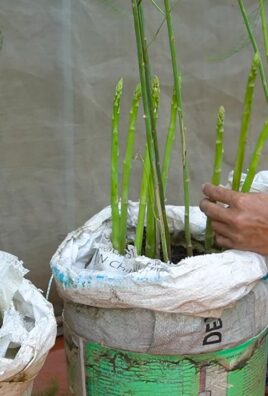
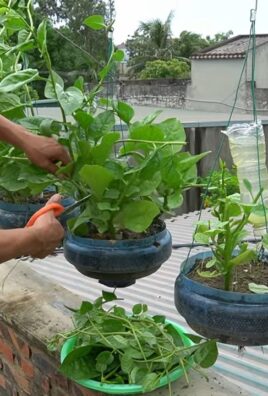
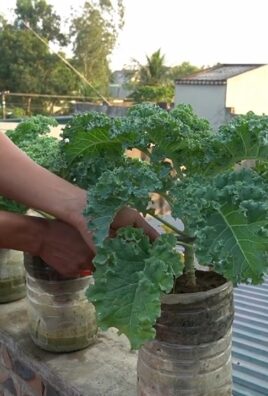
Leave a Comment